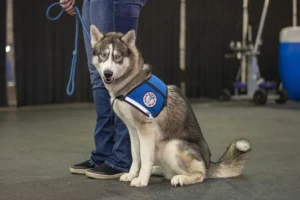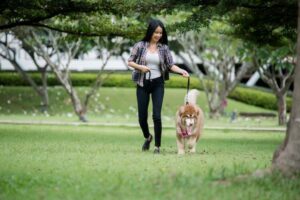Finally! It’s Springtime. After a long, sleepy winter, the days are waking up in their typically fashionable way. The birds are busy and singing, the daylight hours are growing longer– and warmer, and lawns are being prepped and readied to become homes to beautiful gardens.
After indulging in daydreams of vibrant salads, nutrient-packed smoothies, and sunny plant-adorned meals enjoyed in a floral wonderland the last thing you could conceive of would be your furry pal taking an eager paw to your garden and destroying all your carefully laid-out dreams. Without the proper knowledge, keeping your garden a sanctuary for growing might seem impossible, but there are a few additional steps you can take to restore your confidence…and your green-thumb.
Here’s how to grow your delightful garden and keep it safe for (and from) Benji and his surely well-intentioned exploits.

Know Which Plants Are Dog-Safe and Dog-Toxic
You don’t need to become a phytotoxicologist (why yes, that indeed IS the name of someone who studies plant poisons), but gaining a general knowledge of what plants have the potential to be harmful or harmless to your dog will be necessary. Some common garden plants that can be toxic to dogs are onions, tomato plant leaves, lilies, and tulips.
The ASPCA has a remarkably comprehensive list of toxic and non-toxic plants, here you can check (and double-check) the list for plants you would like to grow and make sure they are dog-friendly. You may also check with your local nursery as an additional knowledgeable and trusted resource.
Plan to avoid using toxic fertilizers, herbicides and pesticides in your garden as they may be a danger to your pooch’s safety even without being consumed.
If you do choose to include any dog-toxic plants in your garden, always use a solid barrier that will protect your dog from accidental ingestion. If you suspect that your dog has ingested a toxic plant, contact your vet immediately.
Inversely, including green beans, some berries, parsley, rosemary and thyme in your garden can be mutually beneficial for you and your canine companion as they all offer health benefits such as vitamins and antioxidants that (in small doses) can be added to your dog’s meals for a nutritional boost. Dog parenting win!

Choose More Mature Plants For Planting
Choosing to use plants that have already been grown from seed can increase the likelihood of durability and continual growth if your pup does get it’s adorable, floofy paws on it. This is because of a mature plant’s ability to establish strong roots more quickly than a seedling. Also, a damaged thriving plant is likely to survive to the subsequent growing season. Resiliency is the name of the game here.
Use Dog-Proof Garden Spaces
Planting your garden in a raised bed or a container that cuts off access to furry critters is a fool-proof way of protecting your greenery, even more so if you also choose to use a bed cover. These can be purchased or, for you DIYers, a quick Google search, some chicken wire, and PVC pipe is all that stands between you and a gardener’s piece of mind.
Try Border Plants
Low-lying gardens can make use of vegetation that also acts as a barrier for unwanted visitors. Thornless hawthorne varieties, magnolia bushes, and forsythias are all tall-growing and attractive dog-friendly additions to your gardenscape, especially if you’re looking for plant-varietal security guards.
Using pungent plants around the border of your garden is also a natural method of keeping your four-legged friend at bay. Any casual snoot-booper can tell you that dogs are gifted with super senses of smell. One of the things this means is that plants with strong odors can actually repel your pet.
Some scents that are disliked by pups are lemon, pepper, lavender, and the scent marigolds. For the lemon and pepper scents, lemon balm and nasturtium will “spice up” your efforts; both dog-averting and culinary.
Create A “Go Play” Area
All garden and no play makes pup a sad boy.
Creating a fun, interesting space for your dog to run and play will keep them interested in meaningful play and out of trouble. Natural fixtures and obstacles like, lying logs, stumps, and rocks are entertaining for puppers as they get in their daily zooms and can double as makeshift paths around your garden. You may also choose to create a designated digging area for your dog and train them to use that area alone to practice their excavation skills.
And, of course, any dog-friendly garden includes a nice, shaded spot with a water bowl for relaxing and naps. Whether you’re also taking advantage of those naps in the shade is entirely up to you.
Enjoy Your Dog Friendly Garden
The true marker of a dog friendly yard with a garden is balance. Having a multi-use space that allows you to cultivate your plants– and let’s your pooch be a pooch. He’s a good boy, he totally deserves it.
The fruits of your labor, your know-how, and your puppy love will pay off in the form of nutritious, home-grown food and a happy, healthy dog. Enjoy!






